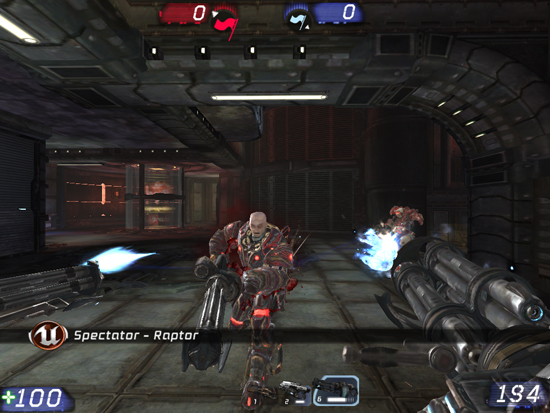AMD 780G: Preview of the Best Current IGP Solution
by Gary Key on March 10, 2008 12:00 PM EST- Posted in
- CPUs
Quick Thoughts
The AMD 780G platform offers significantly lower CPU utilization rates than the G35 in our H.264 playback tests while jockeying back and forth with the GeForce 8200. VC1 and MPEG-2 playback was certainly lower on the 780G/GeForce 8200 platforms, though the G35 was at least in the same ballpark. Intel has made some strides with the 15.8 drivers in regards to MPEG-2 playback and overall image quality. Our experiences with the 15.9 driver are even better, but we will have to wait until the G45 for a true competitor to the AMD chipset previewed today when comparing hardware accelerated decode capabilities.
More important than the raw numbers is that throughout testing, neither the 780G nor GeForce 8200 once experienced pausing, judder, or outright blank screen events - something we cannot say about the G35. Certainly, our processor choices have a significant impact on CPU utilization rates, but considering our two choices are priced equally we have to give the nod to AMD for having a better media solution in this price range. As far as power consumption goes during H.264 playback, the AMD platform averaged 106W, NVIDIA platform at 102W, and the Intel platform averaged 104W - too close to really declare a true winner.
The G35 and GeForce 8200 certainly hold an advantage when it comes to providing multi-channel LPCM audio over the HDMI interface, and that one item is enough for us to go back to our original opening comments that AMD got it right... almost right. From an HTPC perspective, it is hard to argue with the video results from the HD 3200, but the audio capabilities of the G35 and GeForce 8200 still sway us at times to the other side.
After testing nearly non-stop over the past two weeks, we think the 780G is the better overall solution and are still amazed that AMD made such a significant jump in IGP performance in such short time. Our comments come from reviewing the results from close to two dozen benchmarks and a general maturity in the platform at this moment, something we could not have said when our first boards arrived a few weeks ago.
The only wild card at this point is the NVIDIA GeForce 8200 as it appears to be very close to the 780G in multimedia performance, but gaming and application capabilities are lagging a little in early testing. Whether this is due to an immature BIOS, chipset limitations, or drivers is up for debate at this point (Ed: calling 1-800-NVIDIA, please pick up). We will have full results for this chipset in our roundup, but considering most boards based on the MCP78 are not due for another month, we have to tip our hats to AMD for better market execution at this point.
The Intel G35 platform will show its strength in areas like office applications and video/audio encoding thanks to the Core 2 processor family. However, it has an Achilles heel that keeps it from being an all around champion. Besides dismal H.264 decoding abilities with low-end processors, casual gaming is an almost complete disaster on this platform. This is an area we will report on thoroughly in our next article. In the meantime, we leave you with these screenshots to ponder which platform is best suited for that casual gamer in the household.
Unreal Tournament 3 - 1024x768 Medium Quality Settings
 780G at 24.3 FPS - Click to Enlarge |
 G35 at 2.6 FPS - Click to Enlarge |
 GeForce 8200 at 19.2 FPS - Click to Enlarge |










49 Comments
View All Comments
yehuda - Wednesday, March 12, 2008 - link
Yes, these are upcoming Intel boards based on the next-gen G45/Q45 chipsets. Thanks for the link.The thing is that dual digital boards could have been here today. The 780G boards from Asus and Gigabyte too have DVI+HDMI on the back panel. My complaint is that they won't let you run both ports at the same time, even though the IGP supports that.
psychobriggsy - Monday, March 10, 2008 - link
It's really good to see AMD doing something well.Well, apart from the southbridge, but at least the USB2 performance issues are fixed, and otherwise most people will never notice the few differences.
Great chipset for HTPC though. Here's hoping to see what a few more driver revisions can do!
samivesusu - Monday, March 10, 2008 - link
http://www.youtube.com/watch?v=rcbGV6Pfb6Q">http://www.youtube.com/watch?v=rcbGV6Pfb6Qgoinginstyle - Monday, March 10, 2008 - link
Thanks for the image comparisons. I think it is about time that somebody showed HD images from actual titles instead of quicktime trailers. Looking forward to the roundup but mainly more image comparisons and quad-core results for the boards. Is a Q6600 on the G35 going to make the stutter/judder problem go away for h.264 titles? Any chance of audio tests with the boards?TheJian - Monday, March 10, 2008 - link
Why would you run a quadcore without a REAL video card? You're missing the whole point of this chipset in that case. Which is HTPC market and the CHEAPO CPU market playing games. This is the best HTPC chipset out there. You can run a SEMPRON 1.8ghz chip as TomsHardware showed a few days ago. That's a SINGLE CORE chip. No need for Dual cores they tested here. IF you have the money for a quad core surely you have $190 for a 8800GT. Why would I want Integrated graphics with a quad core?Ajax9000 - Tuesday, March 11, 2008 - link
Well, one reason is that IGP-to-HDMI is currently the only way to get better than AC3-class digital audio out of an HTPC (due to the lack of OS kernel-level protected audio path for user accessible buses).... which highlights the strange design of the 780G -- the Southbridge can do Intel HD Audio, but the Northbridge is limited to AC3-class audio.
sprockkets - Thursday, March 13, 2008 - link
Or as mentioned L 2.1. Is there anyone that actually notices the difference in audio quality?Hey, I wish someone also tested how the Intel nVidia 7xxx series chipset does. Since it has only one memory channel, it must make it all suck.
Gary Key - Tuesday, March 11, 2008 - link
I have tested this board with a Sempron 64 3400+ and did not have the same results as Tom's with our hardware and driver setup. I am still working on the numbers but the H.264 (AVC) playback experience was not that pleasurable with our video titles. Yes, playback was possible but any system level requests or bitrate spikes above 40Mbps resulted in judder or stuttering. We will look at the lowest common hardware denominator from a CPU/GPU viewpoint in an HTPC focused article next month. We just shipped a 780G board to our Linux editors to test. Hopefully, we can have some initial results early next month.goinginstyle - Tuesday, March 11, 2008 - link
It might be the fact that I can afford a Q6600 or Phenom by not buying a separate video card. The whole point of having a quad is to setup a encoding system that will not take 14 hours to encode a single movie like my Celeron took. I wish this chipset was available for the Intel cpus but I have to admit that my gigabyte 780g board with a 9500 Phenom is working very well right now. After reading about the post processing information, I am glad I bought a phenom. Now I wonder if a Q6600/G35 would have been better if that combo does not choke on AVC materials.